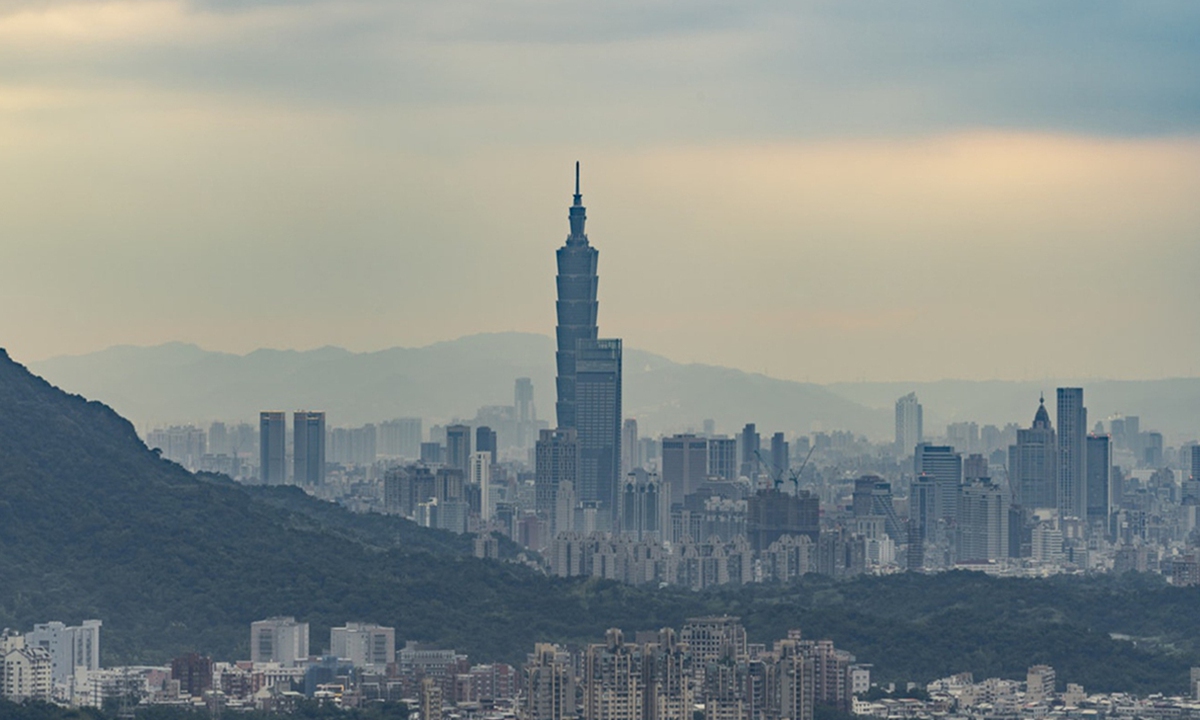
A view of the Taipei city, Taiwan island Photo: Unsplash
As the Taiwan regional leadership election approaches, the hype surrounding the so-called "mainland intervention" and "mainland threat" has intensified. The latest focus is on harmless weather balloons flying over the island of Taiwan.
Since the beginning of the New Year, the defense authority on the island of Taiwan has claimed that Chinese mainland balloons have flown over the island. Media outlets in the US and Taiwan island are quick to sensationalize the issue, aiming to falsely depict a "mainland military threat" during the period leading up to the Taiwan regional leadership election.
An article entitled "China's Balloons Are Back" in The Wall Street Journal, quoting experts, accused the mainland of using gray-zone tactics to interfere in the Taiwan regional leadership election. Such activity "falls below the threshold of military confrontation but is designed to test and intimidate Taiwan," the article said. To suggest that the mainland is resorting to civilian objects as an intimidation tool to interfere in Taiwan's regional election is beyond ludicrous.
Using so-called "spy balloons" to shape the narrative of "Chinese mainland threat" is not new. In February of last year, the US claimed that a Chinese balloon was a Chinese spy balloon without a doubt and then made a big fuss about shooting it down with F-22 fighter jets. After nearly five months of research, a spokesperson for the Pentagon admitted that the Chinese civilian unmanned aerial vehicle that was shot down did not collect any information while it was transiting the US.
It's evident that weather balloons pose no threat to anyone, however, media outlets in the US and Taiwan island use them to perpetuate the "mainland threat theory," employing clumsy and ridiculous tactics. Their aim is to stir up tension in the Taiwan Straits and facilitate the pro-independence forces' use of the "anti-mainland card" in the election.
"The so-called use of gray-zone tactics to interfere in Taiwan's election is pure nonsense. The mainland will not interfere in the island's election," said Lü Xiang, a research fellow at the Chinese Academy of Social Sciences.
The hype by the US and Taiwan regional media outlets is nothing more than an attempt to further strengthen the "mainland threat theory," distort the current situation in the Taiwan Straits, and smear the Chinese mainland as the "disruptor of the Taiwan Straits situation." Lü emphasized that the US media's hype can be understood as part of a broader psychological warfare, attempting to manipulate public opinion to portray Taiwan region as a "bullied" entity and depict cross-Straits relations as hostile, thereby giving more legitimacy to Taiwan independence.
Song Zhongping, a Chinese military expert, believes that as a matter of fact, it is the US that is actually intervening in the Taiwan regional leadership election, making an issue of Chinese mainland balloons to intimidate the Taiwan residents. It is portraying the Chinese mainland as a serious threat to the Taiwan region while simultaneously promoting its own Indo-Pacific Strategy, thus achieving dual objectives, Song noted.
Asked about the balloons on Thursday, Wu Qian, spokesperson for the Ministry of National Defense, dismissed allegations of interference, noting that the DPP authorities' hype about the so-called "mainland intervention" is nothing more than their usual election tactics, aimed at provoking confrontation and attempting to deceive voters. This old trick has been seen through by more and more Taiwan residents.
The Chinese mainland has never intervened in the Taiwan regional leadership election, and it is even more absurd to claim that balloons are being used to interfere in the election. We advise certain forces from the US and within the island not to create confusion at this time. The US has shamed itself in the balloon farce last February. Their hysterical attempts now will only make them a laughingstock again.




